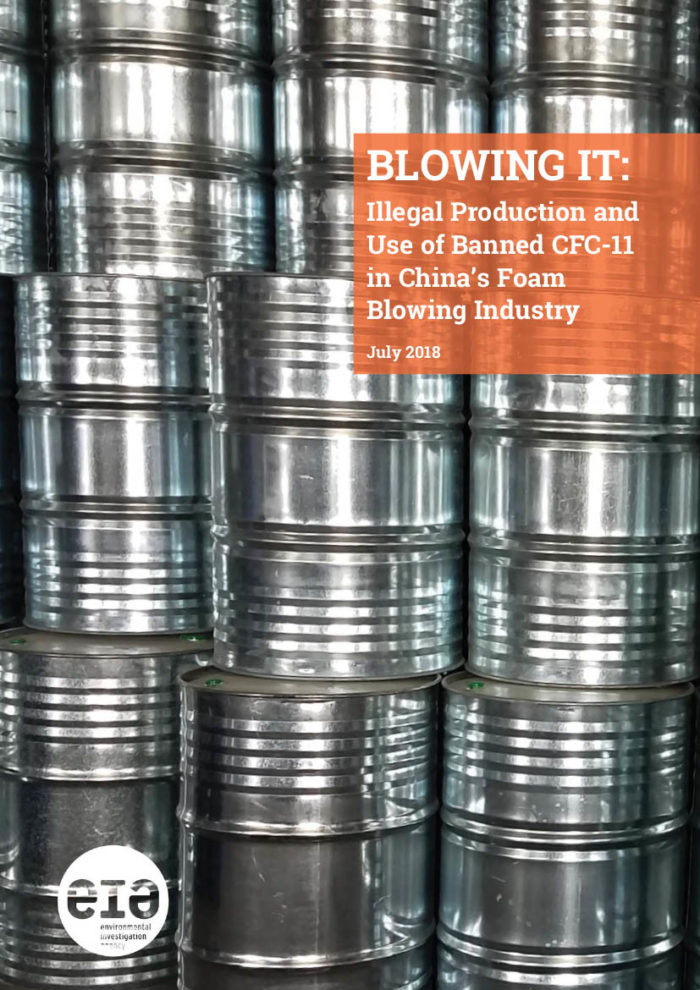Scientists discover high emissions of ozone-destroying gases, pointing to illegal manufacture and use



Scientists have discovered higher-than-expected levels of ozone-destroying chlorofluorocarbon (CFC) gases in the atmosphere – strongly suggesting illegal manufacture, use and emissions.
The findings were published in Nature Communications on 18 May by a group of scientists from the Massachusetts Institute of Technology, Stanford University and the University of Bristol.
Their paper, Joint inference of CFC lifetimes and banks suggests previously unidentified emissions, gives new estimates for unexpected CFC emissions during the period 2014-16 and reports the presence of unexpected levels of CFC-11, CFC-12 and CFC-113.
Production of these three gases has been banned globally since 2010, except for very small quantities in some years of CFC-12 to manufacture metered-dose inhalers.
CFC-11 has primarily been used in blowing agents for the production of polyurethane foams, CFC-12 was used primarily as a refrigerant and CFC-113 as a cleaning solvent for electrical and electronic components; CFC-113 is also used as a feedstock to manufacture other chemicals, including climate-harming hydrofluorocarbons (HFCs) which are widely used in refrigeration and air-conditioning.
EIA Climate Campaigns Leader Clare Perry said: “This study provides more compelling evidence that the Montreal Protocol and world governments must urgently step up to a number of challenges – the illegal trade and use of CFCs and other ozone-depleting substances, emissions from the use of these chemicals in the manufacturing of other chemicals and the banks of ozone-depleting substances that continue to release super greenhouse gases to the atmosphere.
“As the world moves towards net-zero in 2050, we simply cannot afford to not close these loopholes.”
 The issue of unexpected CFC-11 emissions was first raised in 2018 and EIA investigations subsequently discovered that the source was the illegal production and use of CFC-11 in China for making polyurethane foam blowing agents.
The issue of unexpected CFC-11 emissions was first raised in 2018 and EIA investigations subsequently discovered that the source was the illegal production and use of CFC-11 in China for making polyurethane foam blowing agents.
Swift action from China to crack down on the illegal CFC-11 use showed an immediate effect in the atmosphere, with 2019 emissions decreasing significantly.
Although the new study does not pinpoint potential sources, China is overwhelmingly implicated in CFC-11; and with East Asia identified as the source of the CFC-12 and CFC-113 emissions in other studies, it is highly likely that China is again the culprit for these gases.
A series of papers have been published in recent years looking at unexpected emissions of CFCs, which are ozone-depleting substances and also potent greenhouse gases.
Scientists measure the concentration of these gases in the atmosphere over time, extrapolate estimated emissions from their measurements and then look at whether the emissions are in line with what would be expected from continued uses, including from the banks of old equipment and products still containing and potentially leaking CFCs, such as old fridges and foams.
Getting an estimate for new and unexpected emissions is therefore highly dependent on the size of the CFC banks and the release rates from these banks over time, which is extremely difficult to estimate.
Another challenge with estimating CFC emissions is the uncertainty regarding the lifetimes of the chemicals in the atmosphere. This new study looked at both the lifetimes and banks for three CFCs and suggests that emissions are likely larger than previously estimated.
Based on the new modelling, the paper’s authors estimate new, unexpected emissions during 2014-16 of 23,200 tonnes per year of CFC-11, 18,300 tonnes per year of CFC-12 and 7,800 tonnes per year of CFC-113. These estimates are substantially larger than previously identified sources.
Due to the high Global Warming Potential of the CFCs in question, the unexpected and new emissions of the three gases over 2014-16 totalled more than one billion tonnes of CO2-equivalent, more than twice the annual UK greenhouse gas emissions.
EIA is calling for a comprehensive evaluation of the Montreal Protocol’s monitoring, reporting, verification, compliance and enforcement mechanisms to ensure that the phase-out of ozone-depleting substances is sustained and to explore additional climate benefits that can be achieved such as accelerating the Kigali Amendment to the Montreal Protocol to phase down HFCs and addressing feedstock emissions.